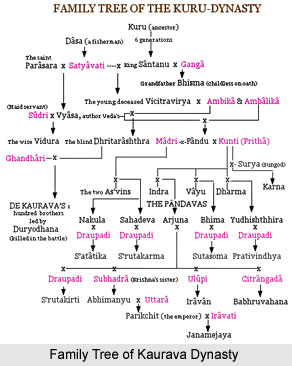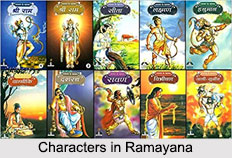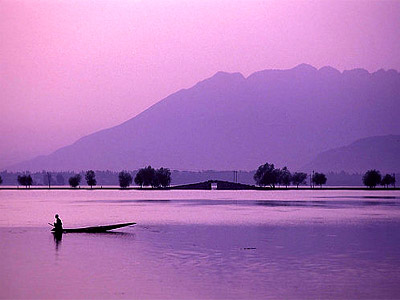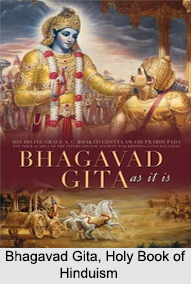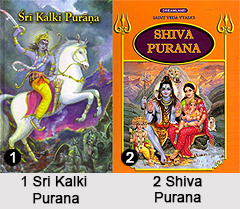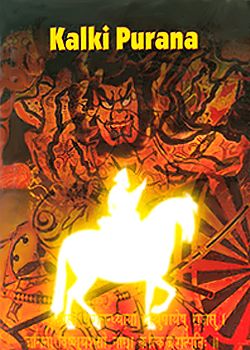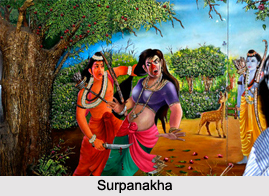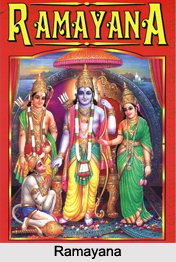 Ramayana is one of the greatest Indian epics ever written and it forms an important part of Indian religious and literary history. Ramayana, even in the form in which it is read today, is still a fairly unified heroic poem. It is believed to have been written by a poet named Valmiki, and there is no doubt to believe that a poet of this name really lived and first shaped the ballads, which were scattered in the mouths of the bards, into the form of a unified poem. In fact, Valmiki is often said to be the first `Kavi` or author of ornate poetry, Adikavi, and Ramayana is said to be the first ornate poem.
Ramayana is one of the greatest Indian epics ever written and it forms an important part of Indian religious and literary history. Ramayana, even in the form in which it is read today, is still a fairly unified heroic poem. It is believed to have been written by a poet named Valmiki, and there is no doubt to believe that a poet of this name really lived and first shaped the ballads, which were scattered in the mouths of the bards, into the form of a unified poem. In fact, Valmiki is often said to be the first `Kavi` or author of ornate poetry, Adikavi, and Ramayana is said to be the first ornate poem.
Origin of Ramayana
The great epic of Ramayana is traditionally attributed to Valmiki, who is considered to be the first poet of India. The Indian tradition believes that the great epic has been written by a single poet, the great sage Valmiki, who was also a contemporary of Lord Rama and also a marginal actor in the great epic. The original version of the story in Sanskrit language is called the Valmiki Ramayana, which dates back to the 4th century B.C. As per the Hindu tradition, the Ramayana was considered to have taken place during the period known as Treta Yuga. The beginnings of ornate epic poetry do indeed lead back to the Ramayana, and Valmiki has always remained the pattern to which all later Indian poets admiringly aspired.
Composition of Ramayana
In the composition of the Ramayana, as in all Kavyas, greater importance is attached to the form than to the matter and contents of the poem, and that so-called `alankaras`, i.e. embellishments such as similes, poetic figures, puns, and so on, are used largely, even to excess. Similes are heaped on similes, and descriptions, especially of nature, are spun out interminably with ever new metaphors and comparisons. Ramayana appears as a work that is a popular epic and ornate poetry at the same time.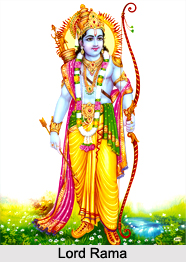
Story of Ramayana
Ramayana presents the story of Lord Rama, who is also the main character in this epic. This great epic comprises of 24000 couplets in seven books which give an account of the royal birth of Rama and his other three brothers, the loss of his throne and his victory over evil. Dasaratha was Rama`s father and was the king of Ayodhya. He had three queens named Kaikeyi, Kaushalya and Sumitra. Bharata was the second son of Dasaratha and Queen Kaikeyi. As a result of the jealously of Kaikeyi, Rama went into exile for fourteen years. Rama was accompanied voluntarily into the forest by his wife Sita and his brother Lakshmana. Lakshmana protected and served Rama and Sita in the forest. However, during their exile, Ravana abducted Sita with the help of an evil plot. Lord Hanuman also plays an important role in this epic by finding Sita and helping Rama to fight the battle against Ravana. The great monkey Sugriva and his alliance with Rama were also fruitful as he regained his wife and his kingdom and he in turn helped Rama in finding out Sita and employed his army of monkeys to fight for Rama against Ravana. After defeating Ravana, the victorious Rama returned to Ayodhya with his wife and was coronated as the new monarch. However owing to the long captivity of Sita the people of the kingdom could not accept her and she was forced to undergo an ordeal of fire, Agnipariksha, to prove her chastity. Even after Sita succeeds in proving her chastity through Agnipariksha, she remains as the subject of suspicion due to which Rama reluctantly abandons her while she was pregnant. Sita takes refuge in Valmiki`s Ashram where she gives birth to twins Lava and Kusha. After the twin grows up and reunites with their father, Sita seeks refuge in the arms of her mother, the Earth, and frees herself from the unjust world.
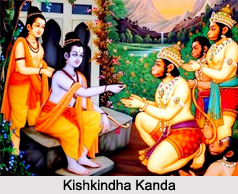 Kandas in Ramayana
Kandas in Ramayana
Kandas or episodes in Ramayana consist of seven parts which include the Bala Kanda, Ayodhya Kanda, Aranya Kanda, Kishkindha Kanda, Sundara Kanda, Yuddha Kanda and Uttara Kanda. These Kandas describe the kingdom of Ayodhya and its ruler Dasaratha and how he got four sons from his three wives. The Kandas or episodes describe the childhood and early life of the four brothers, their attempts in killing the Rakshasas, the marriage of Rama to Sita and the marriage of his other three brothers to the daughters of Janaka. The exile of Rama, Lakshmana and Sita to the forest, the death of Dasaratha and the regency of Bharata are also narrated in the episodes. The Aranya Kanda gives an account of the forest life of Rama, Lakshmana and Sita, the killing of the Golden deer by Rama and the abduction of Sita by Ravana. In Kishkindha Kanda, Rama meets Sugriva and forms an alliance with him and kills Bali to make Sugriva the king of Kishkindha. In Sundara Kanda, Hanuman flies to Lanka and meets Sita and in Yuddha Kanda there is the mention of the construction of the Adam`s Bridge to Lanka and the fight against Ravana and the subsequent death of Ravana in the hands of Rama. The last episode of this great epic is known as the Uttara Kanda which narrates the tale of Rama`s Ayodhya return and his coronation, the ordeal of Sita, Lava and Kusha, sons of Rama, and finally the last days of Rama in the world.
Characters in Ramayana
The different characters present in the great epic Ramayana present numerous human emotions. The entire epic is centred round the main character, Lord Rama and his wife Sita. Apart from them, there are various major and minor characters revolving round them. Each of the characters portrayed in this epic have its own significance. The character of King Dasaratha, the demon king Ravana, Rama`s younger brother Lakshmana, the great monkey Hanuman, Bharata, Kaikeyi, Vibhishana and a number of other characters contribute immensely in the great epic Ramayana.
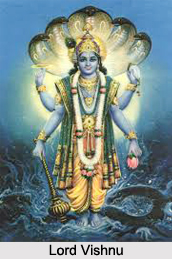 Significance of Ramayana
Significance of Ramayana
Lord Rama, the main character of the great epic Ramayana, is a famous deity worshiped by the Hindus all over India and abroad. Every year, several devout pilgrims follow Rama`s journey through India, staying at each of the holy places along the way such as Rameshwaram, Hampi, Kishkindha, Nasik and Chitrakoot. The epic of Ramayana is not only a literary monument but it acts as an integral part of Hinduism, and is considered to be so holy that the mere reading of the text or hearing of it, or of some passages of the epic, is thought to set the Hindus free from sins and bless the listener or reader. As per Hindu tradition, Rama is the incarnation or Avatar of Lord Vishnu and the primary intent of this avatar was to show the righteous path or Dharma to all the creatures that live on earth.
Since more than two thousand years the poem of Rama has remained alive in India, and it continues to live among all grades and classes of the people. The men are elevated by the glorious deeds of Rama and are edified by his wise speeches, the women love and praise Sita as the ideal of conjugal fidelity, the highest virtue of a woman. Popular sayings and proverbs bear witness to the familiarity of the people with the stories of the Ramayana. But also the teachers and masters of the various religious sects refer to the Ramayana and draw upon it, when they wish to propagate-religious and moral doctrines among the people; and the poets of all later times, from Kalidasa down to Bhavabhuti and their epigones, have ever again drawn their materials from the Ramayana and worked them up anew. The epic of Ramayana is thus a fine literary piece of work which not only narrates the incidents of the birth of Lord Vishnu in the form of Rama in Ayodhya but it also forms as one of the sacred literary works of Hinduism which teaches human beings about the triumph of good over evil.













